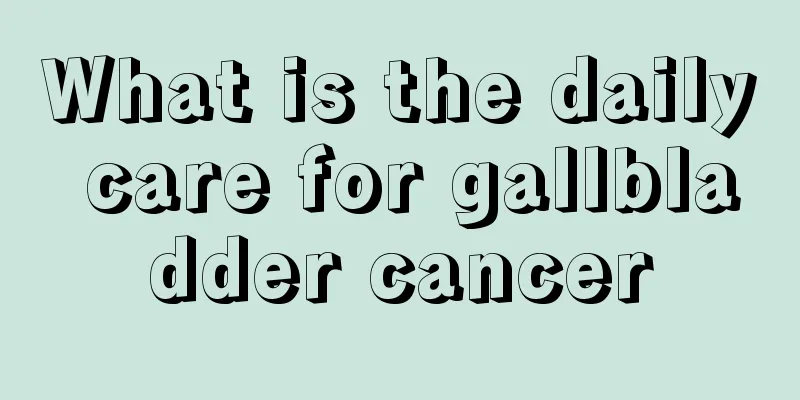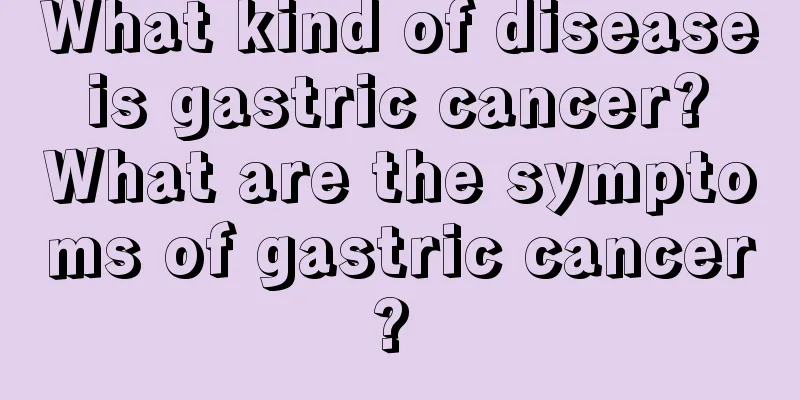Location of colon cancer

|
Colon cancer is a common digestive tract malignancy that occurs in the colon, ranking third among gastrointestinal tumors. The most common sites are the rectum and the junction between the rectum and the sigmoid colon. When it comes to the site of colon cancer, many people think that this question is very simple, because it is naturally the colon. In fact, it is most common at the junction of the rectum and the sigmoid colon. Colon cancer is more common in middle-aged and elderly people, with the majority being between 30 and 69 years old, and more common in men than women. Early symptoms are usually not obvious, while common symptoms in patients in the middle and late stages include abdominal pain and digestive tract irritation, abdominal masses, changes in bowel habits and stool characteristics, anemia and symptoms caused by chronic toxin absorption, intestinal obstruction, intestinal perforation, etc. Abdominal pain and digestive tract irritation symptoms: Most patients have varying degrees of abdominal pain and discomfort, such as dull abdominal pain, right-sided abdominal fullness, nausea, vomiting, and loss of appetite. Symptoms often worsen after eating, sometimes accompanied by intermittent diarrhea or constipation, and are easily confused with chronic appendicitis, ileocecal tuberculosis, ileocecal segmental enteritis, or lymphomas that are common in the right lower abdomen. Hepatic flexure cancer of the colon can present as paroxysmal colic in the right upper abdomen, similar to chronic cholecystitis. It is generally believed that pain from right-sided colon cancer often reflects to the upper part of the navel; pain from left-sided colon cancer often reflects to the lower part of the navel. If the tumor penetrates the intestinal wall and causes local inflammatory adhesions, or forms a local abscess after chronic perforation, the pain site is where the tumor is located. Abdominal masses: generally irregular in shape, hard in texture, and nodular in surface. Transverse colon and sigmoid colon cancers have a certain degree of mobility and mild tenderness in the early stages. If ascending and descending colon cancers have penetrated the intestinal wall and adhered to surrounding organs, chronic perforation to form abscesses, or penetrated adjacent organs to form internal fistulas, the masses are mostly fixed, with unclear edges and obvious tenderness. Changes in bowel habits and stool characteristics: This is the result of ulcers and secondary infections caused by tumor necrosis. Bowel habits change due to toxins stimulating the colon, with an increase or decrease in bowel movements, and sometimes diarrhea and constipation alternating. There may be abdominal cramps before defecation, which are relieved after defecation. If the tumor is located lower or in the rectum, there may be symptoms of rectal irritation such as anal pain, difficulty in defecation, or tenesmus. The stool is often unformed and mixed with mucus, pus, and blood. Sometimes it contains a large amount of blood and is often misdiagnosed as dysentery, enteritis, hemorrhoidal bleeding, etc. Symptoms of anemia and chronic toxin absorption: The necrosis of the tumor surface forms ulcers, which may cause continuous small amounts of bleeding. The blood and feces are mixed and are not easy to attract the patient's attention. However, due to chronic blood loss, toxin absorption and malnutrition, anemia, emaciation, weakness and weight loss may occur. Late-stage patients have edema, hepatomegaly, ascites, hypoproteinemia, cachexia and other phenomena. If the tumor penetrates the stomach or bladder to form an internal fistula, corresponding symptoms may also occur. Intestinal obstruction and intestinal perforation: caused by mass filling in the intestinal cavity, strangulation of the intestinal tube itself, or adhesion and compression outside the intestinal cavity. It often manifests as incomplete intestinal obstruction with slow progression. Patients with early obstruction may have chronic abdominal pain accompanied by abdominal distension and constipation, but they can still eat, and the symptoms are more severe after eating. Symptoms can be relieved after treatment with laxatives, enema, Chinese medicine, etc. After a long period of repeated attacks, the obstruction gradually tends to be complete. Some patients present in the form of acute intestinal obstruction. About half of the acute colon obstructions in the elderly are caused by colon cancer. When the colon is completely obstructed, closed loop intestinal obstruction is formed because the ileocecal valve blocks the backflow of colon contents to the ileum. The colon from the cecum to the obstruction site can be extremely dilated, and the pressure in the intestinal cavity continues to increase, rapidly developing into strangulated intestinal obstruction, or even intestinal necrosis and perforation, causing secondary peritonitis. Some patients have atypical symptoms in the past, and it is difficult to make a clear diagnosis before surgery. Cancers located in the cecum, transverse colon, and sigmoid colon can cause intussusception when intestinal peristalsis is vigorous. Colon cancer patients do not necessarily have the above typical symptoms. Their clinical manifestations are related to the location of the tumor, pathological type and duration of the disease. The colon can be divided into left and right halves with the splenic flexure as the boundary. The two halves are different in terms of embryonic origin, blood supply, anatomical and physiological functions, intestinal content characteristics and common tumor types, so there are obvious differences in clinical manifestations, diagnostic methods, surgical methods and prognosis. |
<<: Can I get pregnant after uterine cancer is cured
>>: Can bad habits lead to colon cancer?
Recommend
Tell you the causes of lymphoma
Lymphoma, as a malignant tumor, brings a lot of p...
What is the cause of lumbar disc herniation
Nowadays, many people suddenly suffer from lumbar...
Exercise methods during fracture recovery period
Most people around us have suffered from fracture...
Is ovarian tumor serious?
Are ovarian tumors serious? Benign tumors are rel...
Is it good to eat pumpkin all the time?
Pumpkin is a very common dish in our life, it is ...
The difference between external hemorrhoids and rectal cancer
The differences between external hemorrhoids and ...
Can a stethoscope hear the fetal heartbeat?
The so-called fetal heart rate refers to the soun...
What are the signs of fetal movement in the first few days?
The so-called fetal movement generally refers to ...
What are the differences between C6 laser freckle removal and traditional laser freckle removal?
C6 laser freckle removal is a new freckle removal...
Can I eat Gastrodia elata and Deer antler together?
Gastrodia elata and deer antler can actually be e...
What is the cleaning method for household air conditioners
If the air conditioner in your home is used for a...
What will happen if thyroid cancer is not treated
If thyroid cancer is not treated, it may lead to ...
The efficacy and function of cool bubble eggs
Eggs are rich in nutrients and have a significant...
What are the dangers of cervical cancer
What harm does cervical cancer do to women? Many ...
What are the symptoms of advanced lung cancer
With the increasing pollution caused by modern in...









